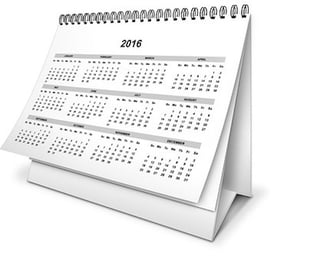
If you’ve found this article, I assume it’s crunch time, and your ACT test date is in the next couple weeks. If you do not fall into this category (you have a bit of time—one month or more—before your test date), you can still read this guide for some study strategies, but I recommend you take advantage of all the time you have by spreading your ACT preparation out. Don't wait until the last 10 days to cram.
Though quality matters in your ACT prep, quantity is also important: you have to invest a lot of time if you want to see big improvements. You can make a lot of progress in 10 days, but you need to dedicate the necessary time to improve your ACT score. In this guide, I’ll walk you through the steps to raise your score by up to four points in just 10 days.
WARNING: Don't use this rushed study program unless absolutely necessary. If you have time to take the ACT again, do quick basic preparation for this test date and then follow a more extensive study program for the next test date. Consider trying PrepScholar or another ACT preparation program before your next ACT test date.
This guide on how to cram for the ACT outlines a very challenging plan that requires a lot of dedication to work. You'll have to be seriously committed to see major improvements.
All that being said, if you do decide to follow this plan, I've outlined two preliminary steps below, followed by the ACT cram plan itself.
Get Your ACT Practice Materials
Make sure to order a copy of The Official ACT Prep Guide, also known as the Red Book. It’s relatively inexpensive (around $20) and vital to your preparation. You should probably get it overnight shipped to you. The book has three real ACT tests for your practice.
If you can’t afford the book (and even if you can), then you should print yourself copies of these free ACT PDFs. I’ll tell you how and when to use them below.
Create an ACT Study Schedule
Make a strict study schedule and don’t stray from it. You only have 10 days to jump four points, so 30 minutes per day of preparation is not going to be enough. At PrepScholar, we recommend fitting in about 40-80 hours of ACT preparation for a four-point score improvement.
You need to fit that study schedule into 10 days. While completing 80 hours of preparation in 10 days will be basically impossible (even more so if school’s in session), you also won’t need 80 hours of studying since, in this shortened time frame, you’ll have the advantage of not forgetting any test technique.
I’ve created a sample ACT study schedule below that fits in about 60 hours of prep into the 10 days before the test.
|
Day |
# of Hours to Study |
|
Wednesday |
5.5 |
|
Thursday |
5 |
|
Friday |
5 |
|
Saturday |
10 |
|
Sunday |
10 |
|
Monday |
5 |
|
Tuesday |
5 |
|
Wednesday |
5 |
|
Thursday |
5 |
|
Friday |
5 |
|
Saturday |
0—Take the Test! |
If you’re doing this ACT cram plan during summer break, great! You’ll have tons of time to dedicate to this schedule. If you’re attempting this schedule during the school year, you’ll need to put your ACT preparation before all else. Remember, it’s only 10 days!
I’ve outlined the ACT study plan for each day below.

10-Day ACT Study Plan
Before you dive into the waters of ACT cramming, look over each day of this plan to make sure you have all the materials you'll need handy for each day. There's nothing worse than sitting down for an intense study section only to realize you needed to print something out and you're out of paper.
Note: This study plan is designed for students who are taking the Saturday ACT. If you're taking the ACT on Sunday or during the week, you may have to adjust some of the timing a little bit so that the 10-hour study days fall on weekends and not weekdays.
Day 1: Wednesday—5.5-6 Hours
Learning Objectives: Get familiar with the test format, pick an ACT target score, and take a practice test.
Get Familiar With the ACT Format—20-30 Minutes
If you’re familiar with the test format, you’ll have a huge advantage over other test-takers. Read these guides for an overview of ACT format:
- What is the ACT? A Complete Explanation of the Test
- What Is the ACT Out Of?
- How Do You Calculate ACT Score? Raw and Scaled
- ACT Rules and Regulations: What You HAVE to Know
You should read these guides so that you’ll know what’s tested on each section of the test and how your final score is calculated. Both of which are important to know so you understand ACT strategy.
Pick Your ACT Target Score—30 Minutes
If you don’t already have an ACT target score, you need to pick one. I won’t go into depth about this process here because we’ve already got another great article on determining the right target score for your dream school.
However, the brief summary of how to choose a target score is to aim for a number at or above the 75th percentile score for admitted students at your target college.
Why pick a target score? Picking a specific score will help you stay motivated during your ACT cram session. Write down your target score somewhere you’ll see it every day (like on your desk), and tell your parents the number. Seeing it every day and telling other people your target score will make you more motivated to reach it.
Take a Practice Test—3 Hours and 35 Minutes
If your copy of The Official Prep Guide hasn’t arrived, you can take a practice test using these free ACT PDFs. Read the rules on how to get the most realistic practice test experience before getting started.
You want realistic practice so that you’re prepared for what the conditions will be the day of the test. You don’t want to be surprised the day of the test.
Review and Analyze Your Practice Test—1 Hour
When you’re done, review your practice test following the steps outlined in our other guide and review your essay using the ACT Writing rubric.
NOTE: I’m having you take and review your ACT Essay for this first practice test. After this test, if you scored an 8 or better, I’d encourage you not to waste your time with any more practice essays. Your ACT Essay is not factored into your overall composite score. Your composite score is what colleges typically look at on your application. Since the ACT Essay does not affect this score, it’s a waste of your limited time to keep practicing it. However, if you’re not getting your score up to 8 or above, you may want to keep practicing it. While it doesn’t affect your composite, a very low essay score (at or below 4 or 5) may worry admissions officers that your writing skills aren’t up to their standards.
Once you’ve completed your basic review, analyze your results: Which section was your weakest? Why was it your weakest? Were your issues mainly not understanding the content or did you make more careless errors? Did you not understand the questions? Did you run out of time?
If you can’t easily determine which is your weakest section (if your four section scores—English, Reading, Math, and Science—were all similar), try to pick the section in which you answered the most questions incorrectly because you didn’t understand the information necessary to answer the question (e.g. you didn’t know the formula you needed for a Math question).
I suggest this method to determine which is your weakest section because information issues are impossible to fix without studying. However, they’re also the easiest kind of problem to fix because all you need to do is learn the necessary material.
Determining your weakest section is important because it tells you what to prioritize in your prep. Don’t worry: you’ll still learn the techniques/strategies for the other sections, but you’ll start with your weakest section.
Day 2: Thursday—5 Hours
Learning Objectives: Learn the strategies for your weakest section and apply them to a practice test.
Now that you’ve determined which section is your weakest, you’ll learn the strategies for that section and practice applying them.
NOTE: I’m providing links to all of the guides you should read to help with strategy and content knowledge for your weakest section. It’s a lot of material, so try to prioritize the topics within each section that you need the most help in.
If there's a topic you aren't missing any questions on, don't worry about reading that guide. For instance, if you aren't missing any inference questions, you should not read the inference question guide.
Prioritize the guides: start with the overall strategies, then check out guides on your weakest content areas (for instance, if you got all of the slope questions wrong in the Math section, start by reading the guide to slopes).
Try to read the guides for all of the topics within each section if you have time. If you don’t have time to read it all in these two hours, don’t worry, simply bookmark the articles you didn’t get to read. I set aside time another day in the schedule to review the rest of the articles.
Learn the Strategies—3 Hours
NOTE: The Ultimate Guide articles below reference other articles you should be reading. You should read every article mentioned within each Ultimate Guide. However, I've also highlighted a few key articles that you cannot miss.

- Reading
- English
- Math
- Overall Strategy
- Pre-Algebra/Elementary Algebra
- Complete Guide to Integers on ACT Math (Advanced)
- The Basic Guide to Integers on ACT Math
- Complete Guide to Fractions and Ratios in ACT Math
- Single Variable Equations in Algebra: ACT Math Strategies
- Probability Questions on ACT Math: Strategies and Practice
- Statistics on ACT Math: Strategies for Mean, Medium, Mode
- Intermediate Algebra/Coordinate Geometry
- Plane Geometry/Trigonometry
- Triangles on ACT Math: Geometry Guide and Practice Problems
- Circles on ACT Math: Geometry Formulas and Strategies
- Lines and Angles in ACT Math: Review and Practice
- Reflections, Rotations, and Translations: ACT Geometry Strategies and Practice
- Polygons on ACT Math: Geometry Formulas and Strategies
- Solid Geometry on ACT Math: The Complete Guide
- Science
- Essay
Take and Review a Practice Section—2 Hours
Whichever your weakest section, sit for a 35 to 60-minute practice section (varies by section). You can either print out one of the sections from these free ACT PDFs or use the Official ACT Test #1 if the book has arrived.
After you’ve taken the section, review using the steps outlined in our other guide that you used for your first practice test. See what areas you’ve improved in and what still needs work.
Day 3: Friday—5 Hours
Learning Objectives: Learn the strategies for another section and try to apply them to a practice test.
Learn More Section Strategy—3 Hours
Pick between your other three sections (English, Math, Reading, or Science) and read all of the articles listed above for that section. If you’re doing extremely well in the section you’re choosing to focus on today (you scored at or above 32 on your first practice test), I’d encourage you to use one of the following guides for your study instead of the other guides:
- How to Get 36 on ACT Math: 8 Strategies by a Perfect Scorer
- How to Get 36 on ACT Reading: 11 Strategies from a Perfect Scorer
- How to Get 36 on ACT English: 9 Strategies from a Perfect Scorer
- The Hardest ACT Science Questions and Strategies to Solve Them
Take and Review a Practice Section—2 Hours
For the section you’ve chosen, sit for a 35-minute to 1-hour practice section (varies by section). Use the corresponding section from the same test (Red Book test #1) you did a section from yesterday, so you can save your complete practice tests for use later on.
After you’ve taken the section, review using the steps outlined in our other guide.
Day 4: Saturday—10 Hours
Learning Objectives: Complete your strategy learning by studying the remaining two sections that you haven’t covered. Take and review practice sections for each.
Learn the Third Section Strategy—3 Hours
Choose between your remaining two sections (English, Math, Reading, or Science), and read all of the articles listed above for that section. As I said above, if you’re doing extremely well in the section you’re choosing to focus on today (you scored at or above 32 on your first practice test), I’d encourage you to use one of the following guides for your study instead of the other guides:
- How to Get 36 on ACT Math: 8 Strategies by a Perfect Scorer
- How to Get 36 on ACT Reading: 11 Strategies from a Perfect Scorer
- How to Get 36 on ACT English: 9 Strategies from a Perfect Scorer
- The Hardest ACT Science Questions and Strategies to Solve Them
Take and Review a Practice Section—2 Hours
Take a 35-minute to 1-hour practice section with realistic testing conditions. Again, use the corresponding section from the same test you did a section from yesterday and the day before (Red Book test #1). Conserve your full-length practice tests for later in the week.
Again, review using the steps outlined in our other guide.

Learn the Final Section Strategy—3 Hours
Whatever remaining section you haven’t covered (English, Math, Reading, or Science), and read all of the articles listed above for that section. As I said above, if you’ve scored high in that section (at or above 32 on your first practice test), use one of the following articles for your study instead of the other guides:
- How to Get 36 on ACT Math: 8 Strategies by a Perfect Scorer
- How to Get 36 on ACT Reading: 11 Strategies from a Perfect Scorer
- How to Get 36 on ACT English: 9 Strategies from a Perfect Scorer
- The Hardest ACT Science Questions and Strategies to Solve Them
Take and Review a Practice Section—2 Hours
Take a 35-minute to 1-hour practice section with realistic testing conditions. Again, use the corresponding section from the same test you did a section from yesterday and the day before (Red Book test #1). Conserve your full-length practice tests for later in the week. Again, review using the steps outlined in our other guide.
You’ve now completed a second entire practice test (broken up over a few days). Compare your second test scores to your scores from your first test. Where did you improve? Where did you make the same mistakes?
If you have time, go back and re-read the appropriate articles to help you learn from your mistakes (for example, if you got a few ACT Math Triangle questions wrong, make sure to review that article).
Day 5: Sunday—10 Hours
Learning Objectives: Complete your second practice test, review, and determine where you still need improvement.
Take Your Second Full-Length Practice Test—3 Hours and 45 Minutes
Make sure to use a new (not partially used) full-length practice test from the ACT Red Book or these free ACT PDFs. If you have the Red Book, use test #2. As you did for the first test, copy the real testing conditions.
Review and Analyze Your Second Practice Test—2 Hours
As always, review your answers and your mistakes. Take the time to compare the results to your other tests. Did you improve? In which areas are you still struggling?
Topic Refresher—4 Hours
Go back to the articles listed above and re-read those for the topics with which you’re still struggling. Create flashcards if you need more help learning grammar rules or math formulas and test yourself with them.
If you’re close to mastering all of the sections (scoring at or above a 32), and you haven’t read the below guides yet, check them out now:
- The 21 Hardest ACT Math Questions Ever
- The Hardest ACT Reading Questions Ever
- The Hardest ACT Science Questions and Strategies to Solve Them
- The Most Common Mistakes You Make on ACT English
Day 6-10: Monday-Friday—5 Hours Per Day
Learning Objectives: Take and review a practice test each day. If you have the Red Book, use test #3 on Monday, then use the free ACT PDFs for Tuesday-Friday. Keep using the real testing conditions. Spend three hours taking the practice test (without the essay)
As always, do detailed reviews using our other guide. Spend about two hours reviewing and referring back to our other articles listed above if you’re not seeing improvement in certain areas.

Your race is over!
Day 11: Saturday—0 Hours
It’s ACT test day! Go to bed early the night before, so you get a full eight hours. Pack your test ticket, calculator, pencils, erasers, extra batteries, snacks, water, etc. the night before, so you’re not rushing to find it all in the morning.
Set your alarm for at least an hour before you need to leave for your testing center. That’ll give you time to eat a big breakfast and wake up. Read a newspaper article or chapter from a novel to get your brain going.
Relax! You’re going to do great!
What’s Next?
Not sure where you want to go to college? We will help you do college research the right way.
Do you know where you want to go to college? Figure out what ACT score will give you the best chance of admission.
Trying to figure how you will afford college? Check out our complete guide to paying for college.
Want to improve your ACT score by 4 points? We have the industry's leading ACT prep program. Built by Harvard grads and ACT full scorers, the program learns your strengths and weaknesses through advanced statistics, then customizes your prep program to you so you get the most effective prep possible.
Check out our 5-day free trial today:
These recommendations are based solely on our knowledge and experience. If you purchase an item through one of our links, PrepScholar may receive a commission.
Have friends who also need help with test prep? Share this article!

As an SAT/ACT tutor, Dora has guided many students to test prep success. She loves watching students succeed and is committed to helping you get there. Dora received a full-tuition merit based scholarship to University of Southern California. She graduated magna cum laude and scored in the 99th percentile on the ACT. She is also passionate about acting, writing, and photography.


































 Holly R.
Holly R.